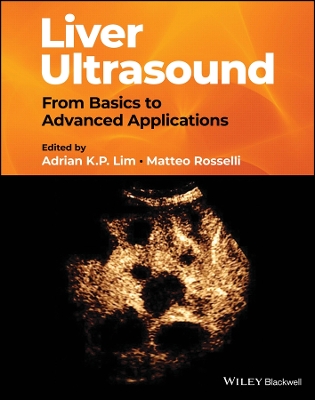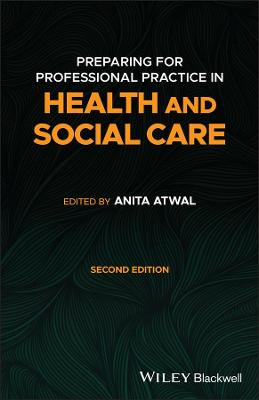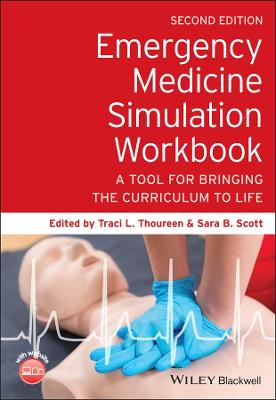How to Facilitate Lifestyle Change
 -15%
portes grátis
-15%
portes grátis
How to Facilitate Lifestyle Change
Applying Group Education in Healthcare
Avery, Amanda; Halliday, Vanessa; Whitehead, Kirsten
John Wiley and Sons Ltd
10/2016
200
Mole
Inglês
9781118949917
15 a 20 dias
226
Preface x
Acknowledgements xii
Chapter 1: Introduction 1
Amanda Avery
1.1 Overview 1
1.2 The need for lifestyle change 1
1.3 Why group education? 8
1.4 What is the evidence for group education? 10
References 17
Chapter 2: Behaviour change 21
Kirsten Whitehead
2.1 Introduction 21
2.2 What is behaviour change? 21
2.3 Why is behaviour change so important for lifestyle change? 22
2.4 Behaviour change theory and models 22
2.5 Behaviour change interventions 25
2.6 Behaviour change techniques 26
References 41
Further reading 42
Chapter 3: What makes a good facilitator? 43
Amanda Avery
3.1 The good facilitator 44
3.2 Communication skills for a group facilitator 46
3.3 How do effective groups form? 54
3.4 How do different people behave in groups? 57
3.5 And finally... 61
References 61
Chapter 4: Planning and organization 62
Kirsten Whitehead
4.1 Introduction 62
4.2 What are the priorities for group education? 63
4.3 Needs assessment 64
4.4 Subject areas for group education 64
4.5 Target participants 65
4.6 Recruitment 65
4.7 Preparing for a group education session 67
4.8 How to deliver a training session 74
References 80
Further reading 81
Chapter 5: Delivering the session 82
Vanessa Halliday
5.1 Introduction 82
5.2 Starting the session 82
5.3 Educational activities 87
5.4 Ending a session 107
References 108
Further reading 108
Useful websites 108
Chapter 6: Resources 109
Vanessa Halliday
6.1 Introduction 109
6.2 Resources for inclusive education 110
6.3 Practical considerations when selecting which resources to use 110
6.4 Types of resources 112
6.5 General considerations when using resources 115
6.6 Case studies 119
References 123
Useful websites 123
Chapter 7: Evaluation 125
Kirsten Whitehead
7.1 Introduction 125
7.2 What is evaluation? 125
7.3 Why evaluate? 126
7.4 What to evaluate? 126
7.5 Who should evaluate? 134
7.6 How to evaluate: tools and methods 134
References 148
Further reading 149
Useful websites 149
Chapter 8: Managing group interaction and how to overcome challenges 150
Vanessa Halliday
8.1 Introduction 150
8.2 Facilitating group interaction 150
8.3 Cultural sensitivity in group education 152
8.4 How to manage discussion of sensitive subjects 153
8.5 Avoiding challenging situations 154
8.6 Working with group members that exhibit behaviours that you find challenging to manage 154
8.7 Answering questions and maintaining your credibility when challenged 157
8.8 Managing the use of mobile devices 159
8.9 Timekeeping 160
8.10 Getting people to attend 161
8.11 Group dynamics 162
8.12 Working with co-facilitators 163
References 165
Further reading 165
Chapter 9: Personal development in group facilitation skills 166
Amanda Avery
9.1 Introduction 166
9.2 Reflection 167
9.3 Peer observation 167
9.3 Additional training needs 172
References 174
Index 175
Preface x
Acknowledgements xii
Chapter 1: Introduction 1
Amanda Avery
1.1 Overview 1
1.2 The need for lifestyle change 1
1.3 Why group education? 8
1.4 What is the evidence for group education? 10
References 17
Chapter 2: Behaviour change 21
Kirsten Whitehead
2.1 Introduction 21
2.2 What is behaviour change? 21
2.3 Why is behaviour change so important for lifestyle change? 22
2.4 Behaviour change theory and models 22
2.5 Behaviour change interventions 25
2.6 Behaviour change techniques 26
References 41
Further reading 42
Chapter 3: What makes a good facilitator? 43
Amanda Avery
3.1 The good facilitator 44
3.2 Communication skills for a group facilitator 46
3.3 How do effective groups form? 54
3.4 How do different people behave in groups? 57
3.5 And finally... 61
References 61
Chapter 4: Planning and organization 62
Kirsten Whitehead
4.1 Introduction 62
4.2 What are the priorities for group education? 63
4.3 Needs assessment 64
4.4 Subject areas for group education 64
4.5 Target participants 65
4.6 Recruitment 65
4.7 Preparing for a group education session 67
4.8 How to deliver a training session 74
References 80
Further reading 81
Chapter 5: Delivering the session 82
Vanessa Halliday
5.1 Introduction 82
5.2 Starting the session 82
5.3 Educational activities 87
5.4 Ending a session 107
References 108
Further reading 108
Useful websites 108
Chapter 6: Resources 109
Vanessa Halliday
6.1 Introduction 109
6.2 Resources for inclusive education 110
6.3 Practical considerations when selecting which resources to use 110
6.4 Types of resources 112
6.5 General considerations when using resources 115
6.6 Case studies 119
References 123
Useful websites 123
Chapter 7: Evaluation 125
Kirsten Whitehead
7.1 Introduction 125
7.2 What is evaluation? 125
7.3 Why evaluate? 126
7.4 What to evaluate? 126
7.5 Who should evaluate? 134
7.6 How to evaluate: tools and methods 134
References 148
Further reading 149
Useful websites 149
Chapter 8: Managing group interaction and how to overcome challenges 150
Vanessa Halliday
8.1 Introduction 150
8.2 Facilitating group interaction 150
8.3 Cultural sensitivity in group education 152
8.4 How to manage discussion of sensitive subjects 153
8.5 Avoiding challenging situations 154
8.6 Working with group members that exhibit behaviours that you find challenging to manage 154
8.7 Answering questions and maintaining your credibility when challenged 157
8.8 Managing the use of mobile devices 159
8.9 Timekeeping 160
8.10 Getting people to attend 161
8.11 Group dynamics 162
8.12 Working with co-facilitators 163
References 165
Further reading 165
Chapter 9: Personal development in group facilitation skills 166
Amanda Avery
9.1 Introduction 166
9.2 Reflection 167
9.3 Peer observation 167
9.3 Additional training needs 172
References 174
Index 175
















